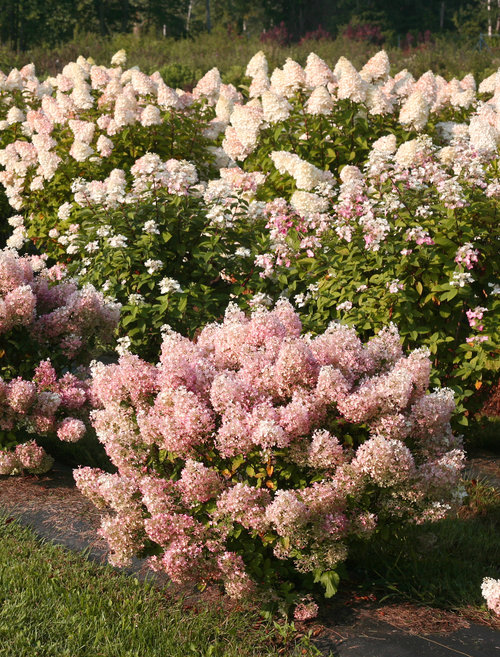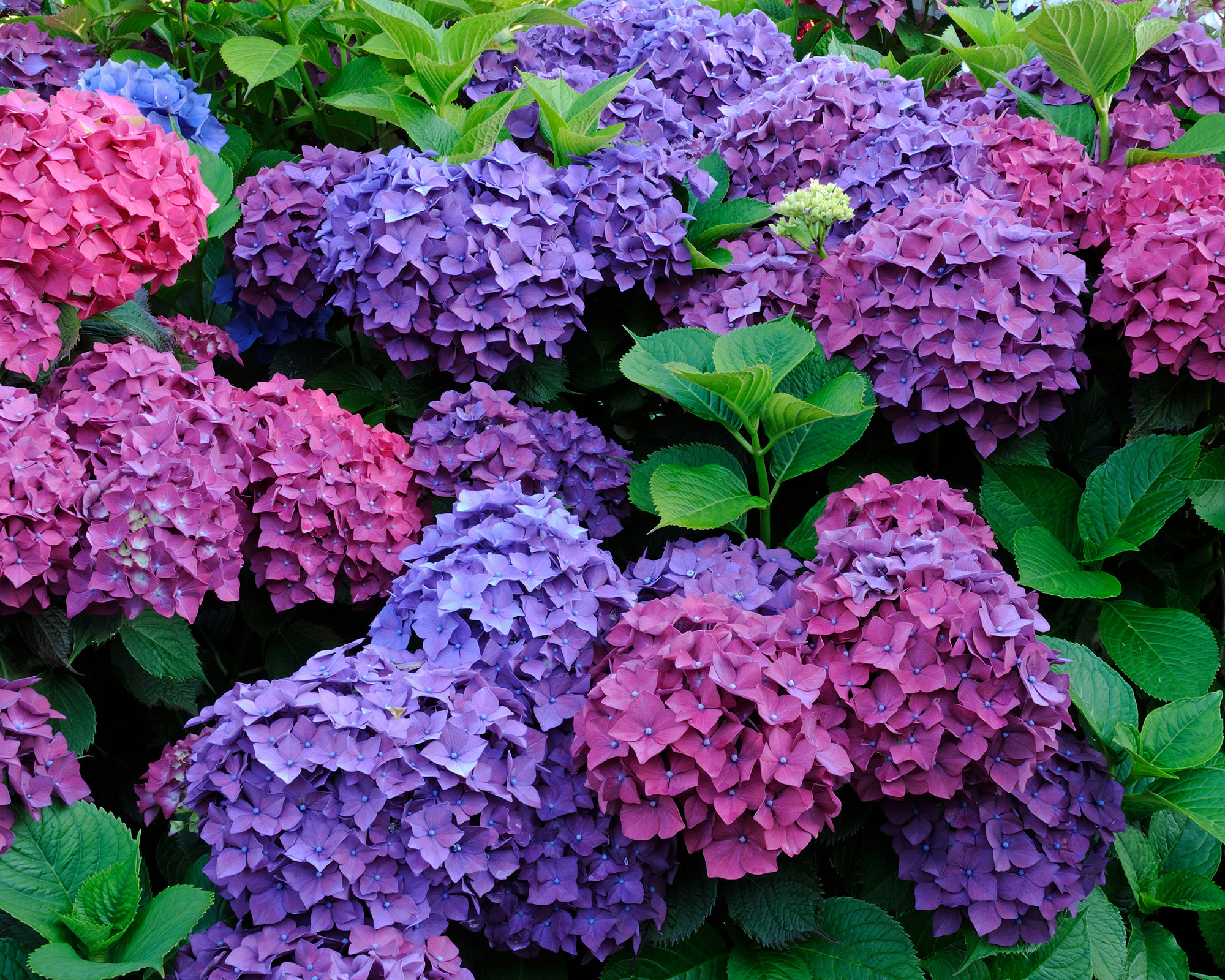Hydrangeas not blooming? Here's why
Common reasons your hydrangeas aren't blooming, and what you can do to fix it


Wondering why hydrangeas aren't blooming can be frustrating for any home gardener. Hydrangeas are one of summer's most anticipated blooms, and having one that doesn't flower is disappointing.
'I always know it's July because people start calling us and asking why their hydrangeas aren't blooming,' says Jeanine Standard of Proven Winners, a leading flower and plant brand in the U.S.
The causes are as varied as the hydrangea varieties themselves, and range from not knowing how to care for hydrangeas or how to prune hydrangeas, to predatory deer, to certain climate causes and more. To help you get to the root of your hydrangea woes, we've rounded up advice from top garden experts, below.
Why won't my hydrangeas bloom?
There are two common, basic reasons that hydrangeas don't bloom: Lack of sun, and lack of time. Before you dig deeper into your investigation, rule out that one of these two issue isn't your culprit.
'There's no such thing as a hydrangea that likes shade,' says Standard.
Hydrangeas can do well in part-sun, but require at least 4-6 hours of direct sun exposure, and another 4-6 hours of indirect sun exposure per day.
The second common reason hydrangeas don't bloom is time. 'A lot of people want instant gratification for a garden, and that doesn't happen. It takes perennials years to reach maturity,' says Standard. Depending on the type of hydrangea you have, it can take 2-5 years to bloom after it's planted.
Design expertise in your inbox – from inspiring decorating ideas and beautiful celebrity homes to practical gardening advice and shopping round-ups.
If your hydrangea gets plenty of sun, and it's at least a few years old, it's time to look further into the reason it isn't blooming.
Why different types of hydrangeas don't bloom

Panicle hydrangeas, like the Proven Winners Bobo hydrangea, flower on new wood
The next step in figuring out why your hydrangeas aren't blooming is knowing which type of hydrangea you have.
Different types of hydrangeas are susceptible to different environmental factors. Knowing your type will help you not only to diagnose what's going on with your hydrangeas this year, but keep them healthy so they bloom next year, too.
There are six common types of hydrangeas:
- Big leaf
- Panicle
- Smooth
- Climbing
- Mountain
- Oakleaf
Each of these varieties falls into one of three categories: flowers that bloom on old wood, flowers that bloom on new wood, or flowers that bloom on both, also known as reblooming/remontant hydrangeas. Knowing which type you have is the first step in diagnosing the problem with your hydrangeas, since they're susceptible to different variables.
Do also consider what to plant with hydrangeas. Knowing how to successfully mix different plants is an important part of learning how to grow hydrangeas. And, of course, companion planting, can be beneficial for every plant in the mix.
Hydrangeas that bloom on old wood

A Gatsby Moon Oakleaf hydrangea
Hydrangeas that bloom on old wood include mountain, Oakleaf, climbing and Big Leaf varieties. These hydrangeas flower on plant growth that was created last year. This means that a lack of blooms this year might be from something that happened to the plant last year.
The most common reasons these hydrangeas do not bloom are:
Climate
If you live in a cold climate, your plants may have been damaged by frost. Typically, hydrangeas are damaged during springtime temperature swings. For example, if you have a heat wave one day, followed by a frost a few days later.
'There are many things that can negatively affect a hydrangea that blooms only on old wood,' says Natalie Carmolli of Spring Meadow Nursery, Inc., a flowering shrub grower in Grand Haven, Michigan. 'First a foremost, weather. These hydrangeas form the buds for next year’s flowers in the previous summer after they’ve finished blooming. All winter they have a nice, hard protective shell that keeps the buds safe. But if you have a warmup in late winter or early spring, that outer shell will start to soften, so the bud can emerge. If you get another cold snap or hard frost, those buds will now freeze and die. That means no flowers.'
To prevent this in the future, cover hydrangeas during any spring freezes.
Pruning
Old wood hydrangeas should not be pruned, because you'll clip off any new buds. If you pruned your hydrangeas last year, they will not bloom this year. Leave them be this year and wait for next year's blooms.
'Improper pruning can also cause no flowers on this type [of hydrangea]' says Carmolli. 'When in doubt, don’t prune!'
Deer
Another reason hydrangeas don't bloom is because deer eat them. This affects all types of hydrangeas, and can be a harder factor to control, but there are some things you can do each year to try and steer the deer away from your bushes.
'You can try applying a deer deterrent spray every other evening early in the season, before they establish their feeding patterns,' says Carmolli. 'Deer are generally creatures of habit, and if you can teach them early to avoid your hydrangeas, they are more like to avoid them all season. That said, when deer are truly hungry, there’s no telling what rules they may break.'
Hydrangeas that bloom on new wood

Hydrangeas that bloom on new wood include Panicle and Smooth hydrangeas. They flower on growth created this year, which means that even if they get damaged there's a chance they might still bloom this year with a little TLC. Panicle hydrangeas are considered among the easiest to grow because they're adaptable and flower more reliably than other varieties.
Still, like old wood hydrangeas, new wood hydrangeas are susceptible to springtime temperature swings, which can damage buds and cause fewer flowers, or later blooming than in an average year. They can also be eaten by deer, and learning how to prune and when to plant hydrangeas can also ensure yours bloom every year. Also, once you know how to winterize hydrangeas, you can protect your prized shrubs from the elements and enjoy their glorious blooms returning year after year.
But, if your Panicle or other new wood hydrangea isn't blooming, it's likely not getting enough light, says Carmolli. Panicle hydrangeas will bloom best when they get 4+ hours of full sun per day.
That, or it's just too young. 'Give new hydrangeas about three years to develop a strong root system, which will help encourage bloom. There is a term called sleep (year one), creep (year two), leap (year three), when it comes to getting a plant’s roots established so it can perform optimally,' she says.
Reblooming hydrangeas

Reblooming hydrangeas bloom on both old and new wood, and include the popular Big Leaf varieties, pictured above.
'Remontant hydrangeas bloom on both old and new wood, so even if the old wood blooms are damaged, the new wood buds, which are formed in the same season, will still bloom,' says Carmolli. 'That bloom may be delayed, but as long as they aren’t browsed by deer or pruned away [they can still bloom]. Keep in mind, some rebloomers bloom on new wood faster than others. Our Let’s Dance® series of bigleaf hydrangeas were bread to rebloom sooner than conventional rebloomers.'
Although they can tolerate some shade, too much can also affect bloom.
Can you make a non blooming hydrangea bloom this year?
Again, whether your hydrangea will bloom this year will depend on the type. If it's an old wood hydrangea, unless it’s just a little later to bloom than you planned, you'll have to wait until next year for flowers.
'Getting your hydrangea to bloom well is a long game,' says Carmolli. 'You can help it out by making sure it isn’t stressed from lack of water - water deeply 2-3 times a week instead of a little bit each day. Add a day if it’s hotter.'
She also suggests adding 2-3” layer of mulch around the plant to help keep roots cool and conserve moisture, and making sure your hydrangeas are in an area where they’ll get at least five hours of sun a day.
Finally, 'take care to cover tender buds in early spring with a sheet or light tarp, and practice proper pruning for the best flower display,' she says.
What to feed hydrangeas to make them bloom
'A good shrub fertilizer, like one that’s developed for roses, will help your entire hydrangea grow more vigorously. But there isn’t something that you can feed it that will specifically force new buds,' says Carmolli. 'Fertilize early in the spring, and again in late spring according to package directions. Don’t fertilize after July, or your plant will just push new foliage growth (not extra flowers) that will not have time to harden off when your plant should be going dormant in the fall.'

Kaitlin Madden Armon is a writer and editor covering all things home. Her work has appeared in Real Homes, Architectural Digest, Martha Stewart Living, Refinery29, Modern Luxury Interiors, Wayfair, The Design Network, and lots more. She graduated from Northeastern University with a degree in journalism and currently lives in Connecticut with her husband, three kids, and black lab.